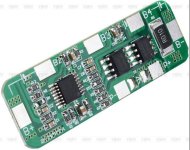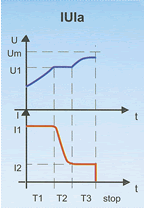Here’s what I’ve taken to using for 16S RC Lipo ebike pack -

http://www.ebay.com/itm/201434924156?_trksid=p2057872.m2749.l2649&ssPageName=STRK%3AMEBIDX%3AIT
It’s too early to declare a win but 4qty for $10 and they appear to play well together in series. I’m currently trying to determine how much parasitic drain while sitting? Also, still unsure if they draw power evenly from all cells? Or, is it the CellLog 8 problem of a couple cells powering the circuit and over long periods of time will drag the pack out of balance?
Got ‘em plugged into 4qty 4S Turnigy hardcase (16S, 60-67V) in the appropriate cell order and charge 2-5A through dedicated charge port using stock JST balance wiring/connectors. JST extensions soldered to the pads.
For discharge, I plug a cheap lighted volt meter into the battery charge port and if/when that goes OFF, I then know about a potential cell voltage problem. It shouldn’t be too hard to rig slightly more elaborate warning lights/buzzer that simply plugs into the battery charge port?
Basically, it’s cell voltage warning only during discharge and reliance on controller LVC but reasonably well protected charge and none of that stupid-ass bleed balance resistor heat and shorted switching transistor nonsense.
These boards have been terminating charge around 4.18V/cell. But keep in mind, I’ve only logged and compared a couple different channels so far. Other channels might be higher or even lower but I do like 4.18V…
If/when cell do ever go out of balance, I can go in with a USB power bank along with a cell phone BMS or other Lipoly 1S USB charger and merely bring up a low cell. Knowing when there’s a cell problem is most of the battle.
As the lawn power tool companies have apparently realized, discharge is the least of a battery pack fire hazard concern in these applications. Much like a bike, lawn tools are used outdoors so smoke isn’t so much an issue while finding a reasonably non-flammable spot (middle of a paved road if nothing else) to dump it and get away isn’t too difficult. Plus, fire during discharge is much more likely to occur during lower SOC so there’s also less energy to dissipate and it's an attended situation too.
Charging however is a much more sinister/dangerous thing. Often happens indoors, unattended and cells are more likely to have their maximum or above full capacity available to dissipate into a building and/or enclosure. Living/garage space, smoke, etc.
Sorry to drone-on but this is a particularly pertinent topic to my recent experimentation with a different way of managing home built battery packs. Maybe something that deserves a little more investigation?




